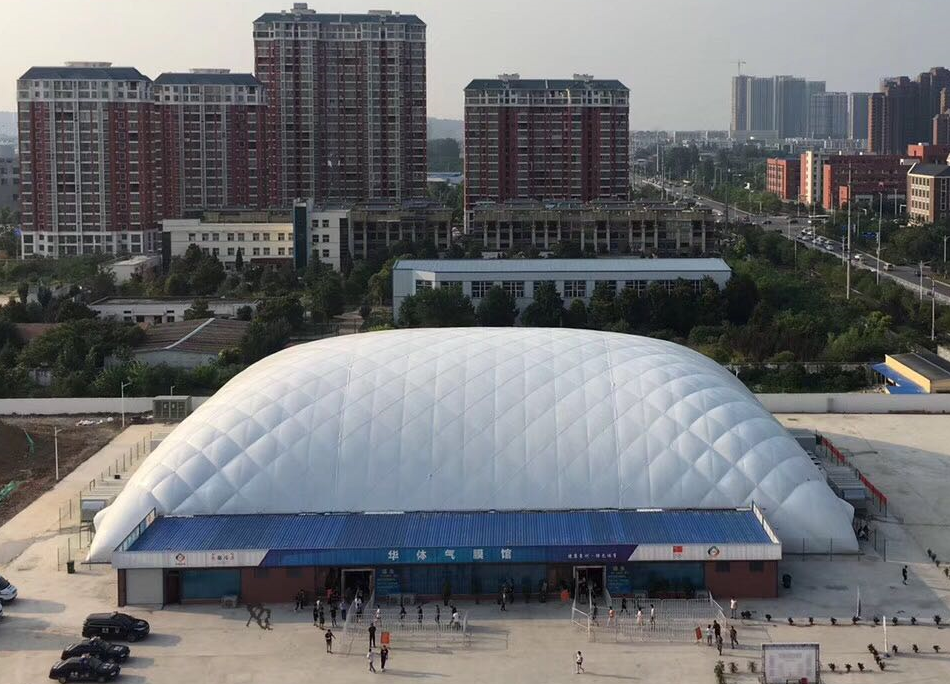Some of the world’s most distinctive buildings use untraditional roofing systems to keep the elements at bay. Instead of a traditional rigid structure, they rely on an underlying skeleton topped by a lightweight, flexible membrane made of fiberglass with a coating of polytetrafluoroethylene (PTFE), more commonly known as Teflon.
The resulting designs are delicate and airy, but their appearance is deceptive: they’re rugged enough for decades of use in harsh conditions. They are also visually stunning, as evidenced by iconic buildings.
Why do architects choose a structural membrane instead of a conventional roof? Here are some of the principal reasons, drawing from the SHEERFILL product line to illustrate the points discussed.

Flexible Design
A membrane structure lets the architect combine distinctive and elegant forms into a unique structure, combining a variety of panel shapes into endless geometric configurations to address complex aesthetic and functional challenges. Compared to a traditional roof, the membrane is lightweight and requires a lighter support structure, which translates into fewer columns and longer spans. The options for the underlying structure include tensile or tensegrity configurations: a grid shell, a frame or a cable net, among others. An alternative approach uses air pressure to maintain the shape of the membrane, resulting in a design that is economical to build, operate and maintain.
Wide Choice of Products
Not every application is the same, so a range of membrane fabrics are available. For example, SHEERFILL I, SHEERFILL II and SHEERFILL IIA are high-strength membranes used in large structures and wide spans; SHEERFILL V is a lightweight membrane suitable for smaller structures; and SHEERFILL Ultralux is optimized for high light transmission while maintaining the economy of wide panels.
Durability
The membrane fabric is dimensionally stable and able to maintain its original shape for decades, even after exposure to live loads, high winds, sunlight and temperatures from -40° to 130° F (-40° to 55° C). The 4,000 square-meter SHEERFILL roof at the University of La Verne, for example, has been in continuous use since it was completed in 1973.
Low Maintenance
A PTFE surface has very low surface tension, making it stain-resistant. Rain or a water spray easily removes accumulated dirt and dust. The membrane’s easy-to-clean surface requires very little, if any, maintenance during its lifetime and will never need painting.
Environmentally Friendly
A membrane can include a titanium dioxide (TiO2) photocatalytic topcoat with self-cleaning and air purifying properties, such as SHEERFILL’s EverClean. This coating combines with the sun’s ultraviolet (UV) radiation to produce hydroxy radicals and superoxide radicals that oxidize (decompose) all organic substances. The residues are washed away by rain. In addition, the EverClean coating decomposes two atmospheric pollutants, nitrogen oxide (NOx) and sulfur dioxide (SO2). These pollutants, contained in exhaust gas and smoke, are major contributors to ozone and acid rain. The reduction process releases nitrate ions that are washed away into the soil to help in plant fertilization.
Energy Efficiency
SHEERFILL membranes can transmit up to 20 percent of incident light, reducing the daylighting cost. At the same time the membrane doesn’t trap heat like a glass structure, saving on HVAC costs. As a result, SHEERFILL is Energy Star certified and is the first architectural membrane to be rated by CRRC, the Cool Roof Rating Council.